Abstract
Intracellular membrane potential responses were recorded from locust photoreceptors under two stimulus conditions: pairs of flashes to dark-adapted receptors, and white-noise modulated light at a range of background intensities from 500 to 15,000 effective photons per second. Nonlinear analysis of the input-output relationships were performed by estimating the Volterra and Wiener kernels of the system. The Volterra kernels obtained from the double-flash experiments were similar to the Wiener kernels obtained from the white-noise experiments, except for a change of time scale. The structure of the second-order kernels obtained with either method gave evidence for a gain control mechanism acting at an early stage of the cascade. Both feedforward and feedback nonlinearities could account for the observed system behavior at any one background level. The differences in amplitude between the kernels obtained at different background levels could be accounted for by an adaptation process which further decreased the gain of the system, acting on a slower time scale, also at some early stage of the cascade.
Full text
PDF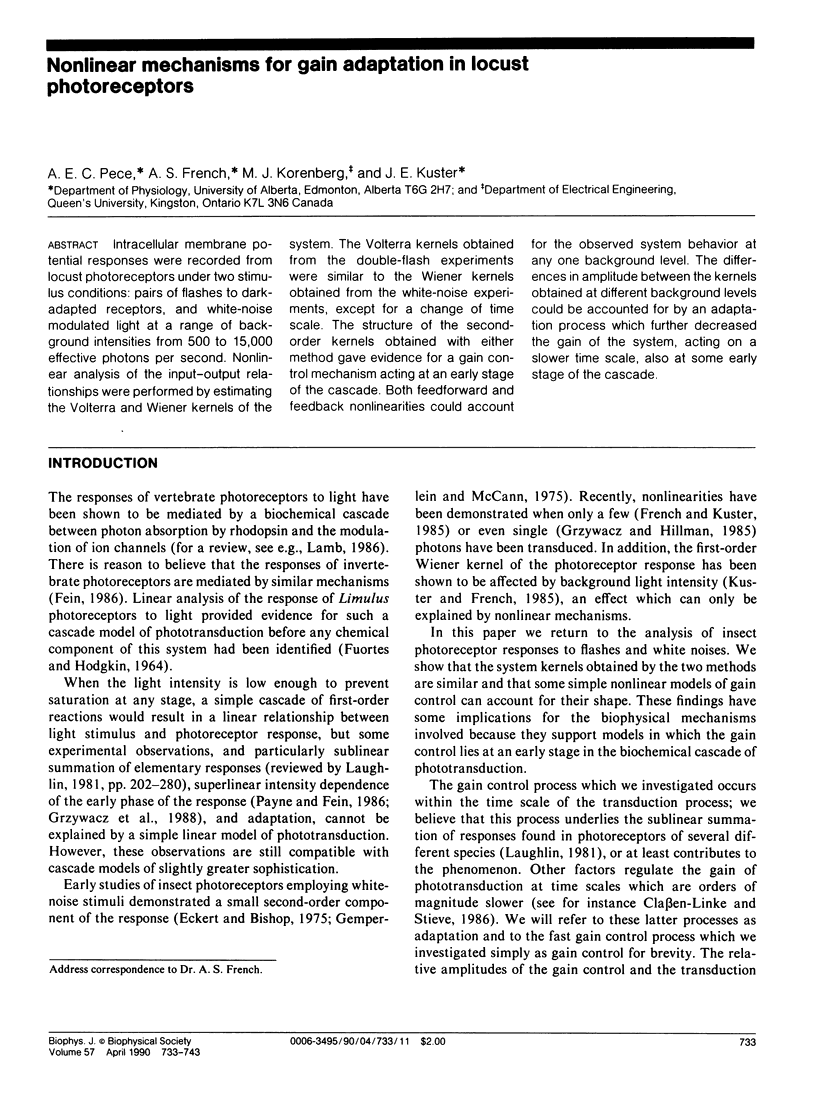
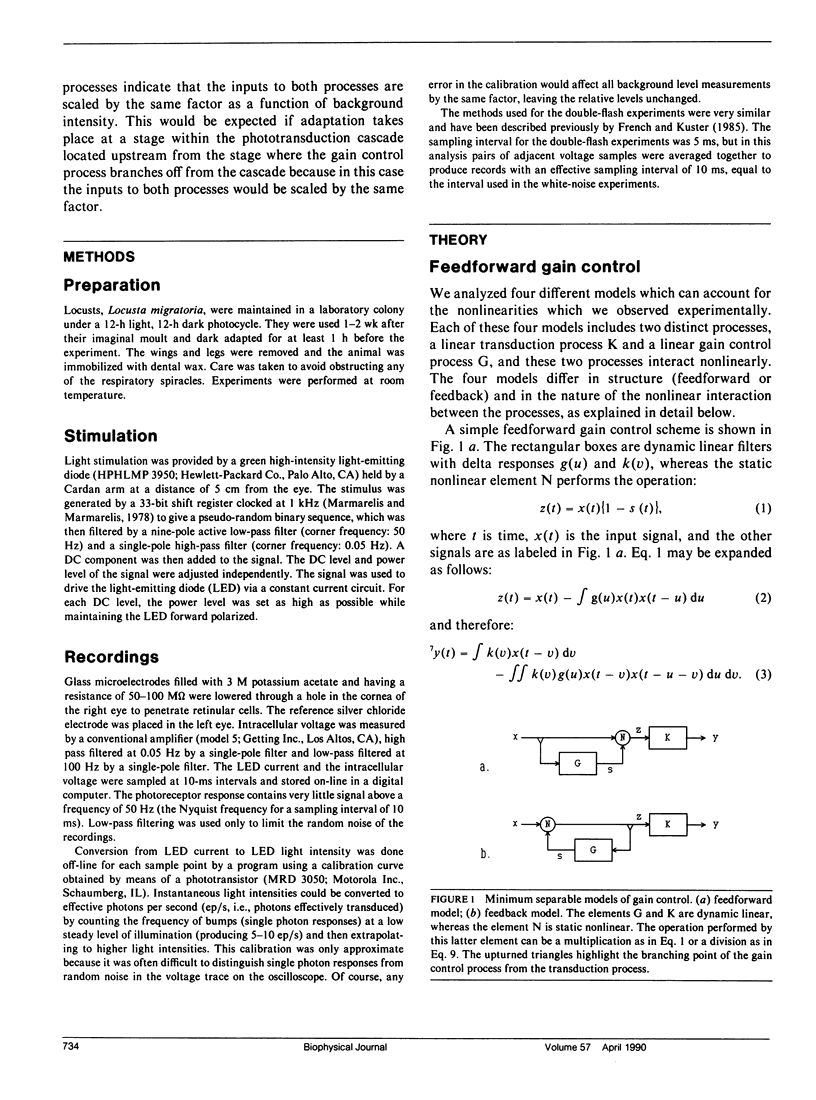
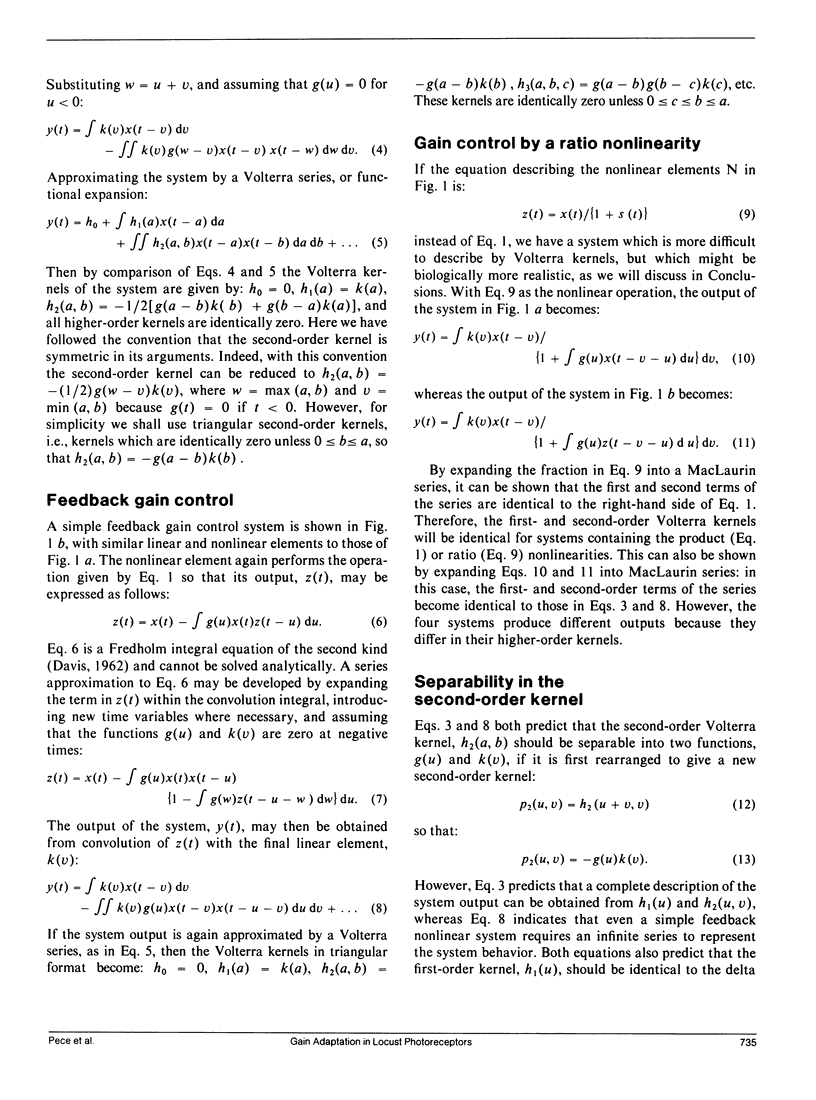
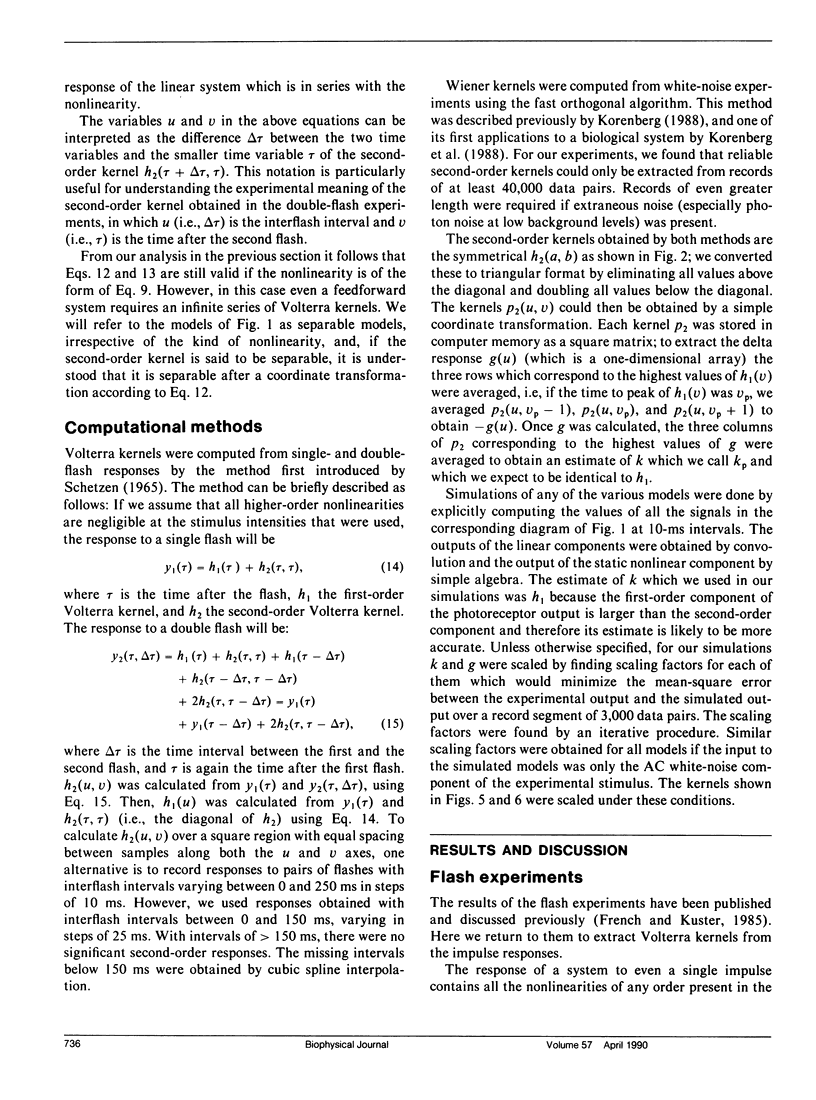
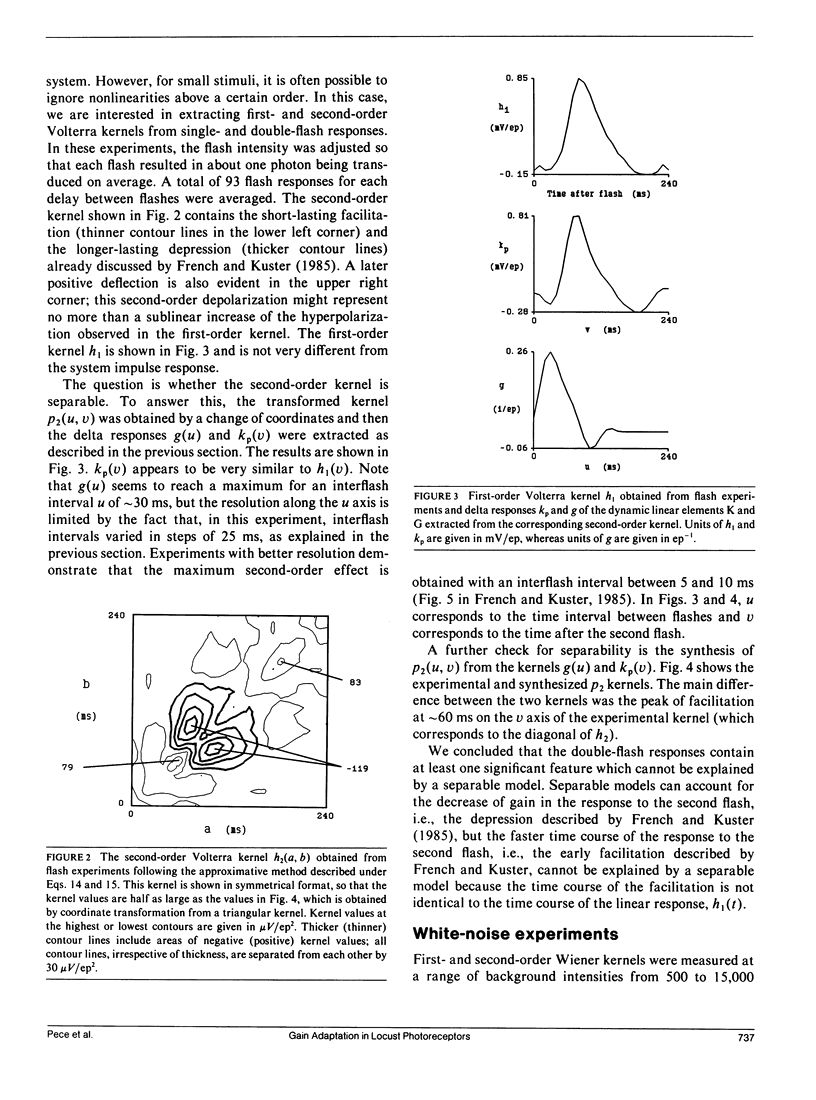
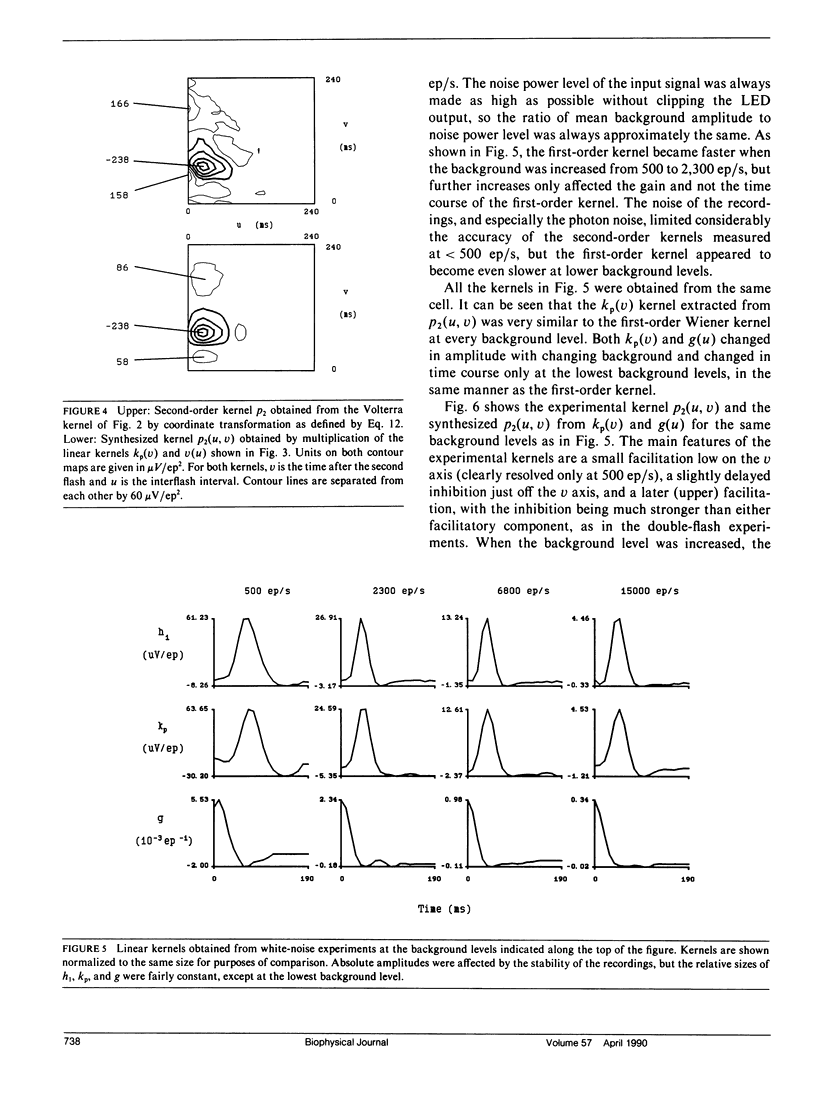
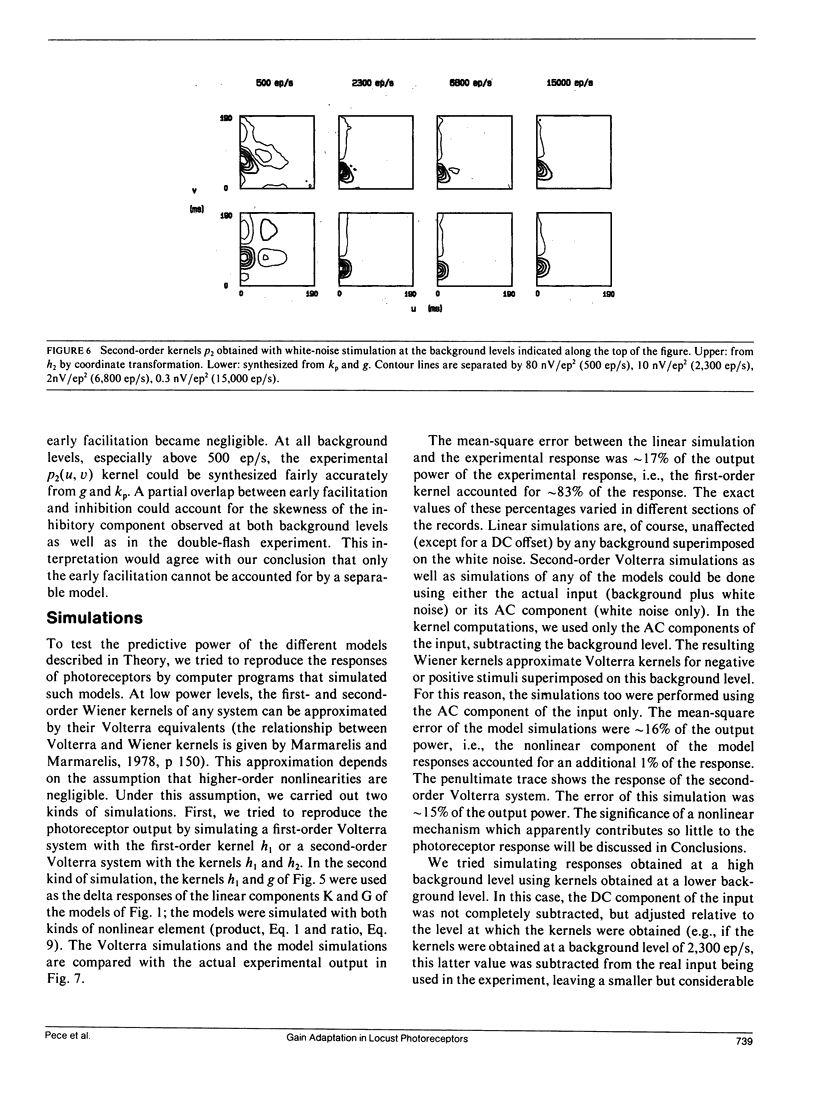

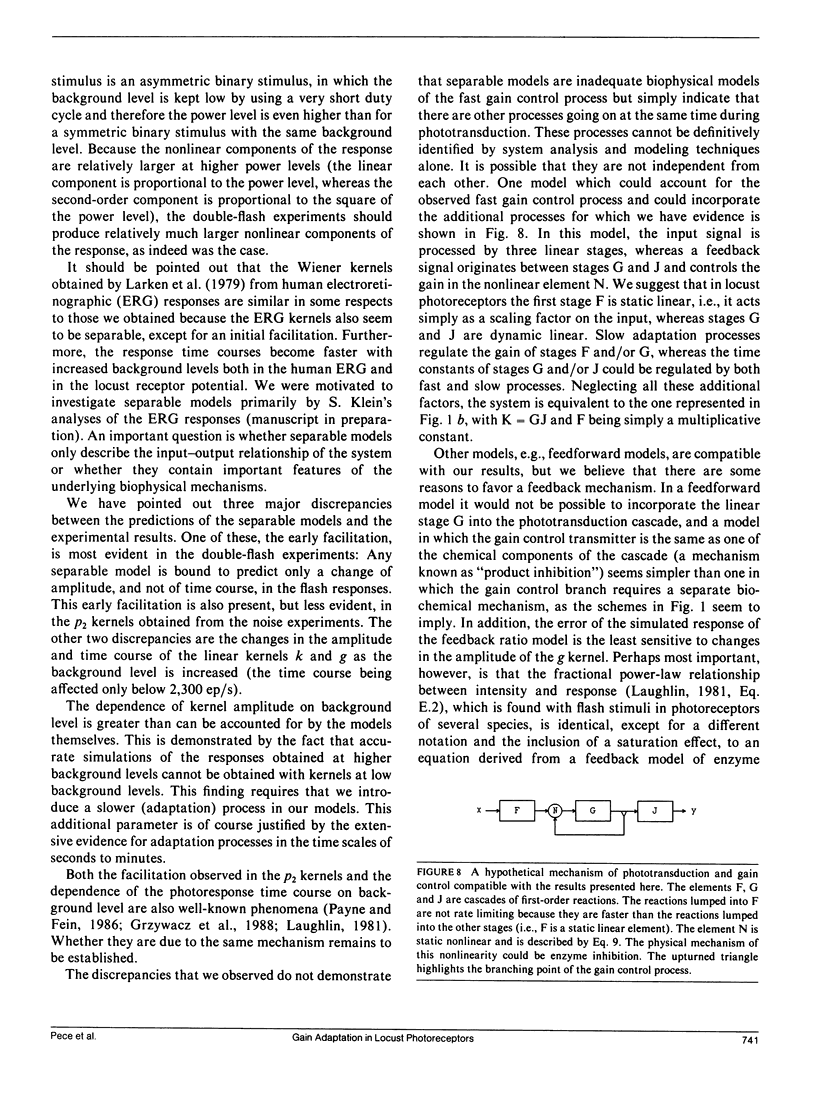
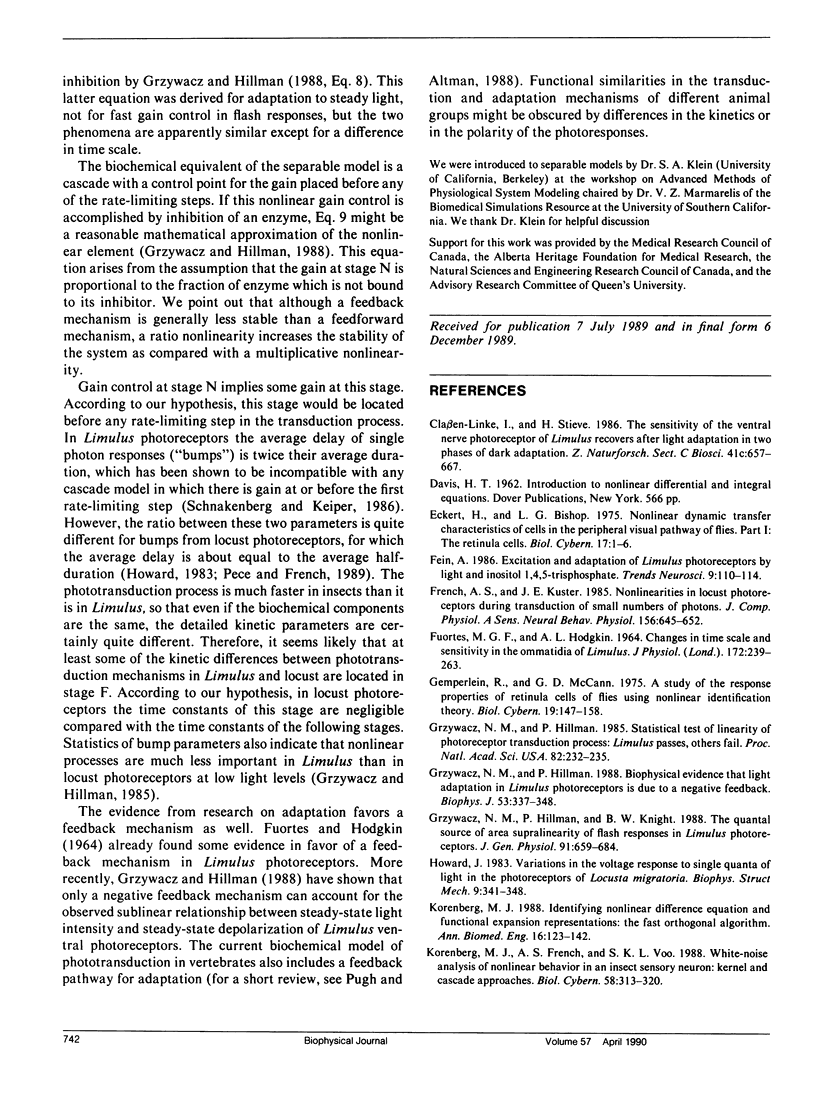
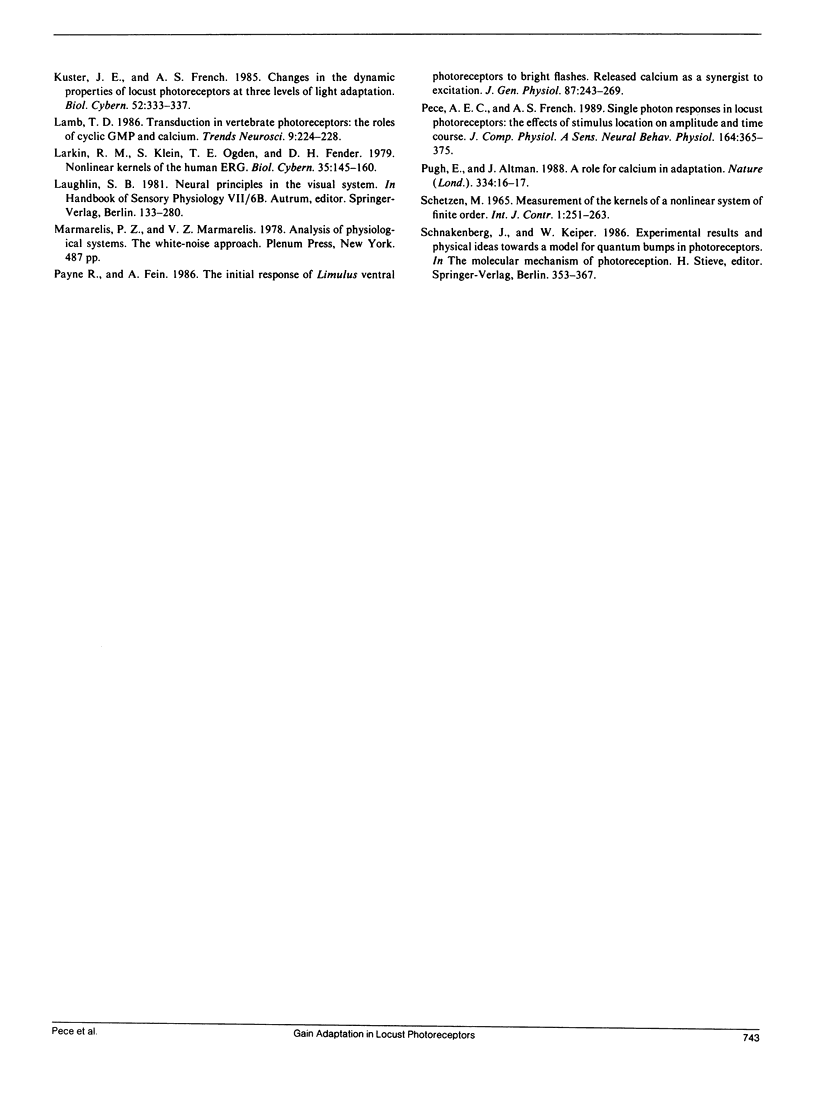
Selected References
These references are in PubMed. This may not be the complete list of references from this article.
- Eckert H., Bishop L. G. Nonlinear dynamic transfer characteristics of cells in the peripheral visual pathway of flies. I. The retinula cells. Biol Cybern. 1975;17(1):1–6. doi: 10.1007/BF00326704. [DOI] [PubMed] [Google Scholar]
- FUORTES M. G., HODGKIN A. L. CHANGES IN TIME SCALE AND SENSITIVITY IN THE OMMATIDIA OF LIMULUS. J Physiol. 1964 Aug;172:239–263. doi: 10.1113/jphysiol.1964.sp007415. [DOI] [PMC free article] [PubMed] [Google Scholar]
- Gemperlein R., McCann G. D. A study of the response properties of retinula cells of flies using nonlinear identification theory. Biol Cybern. 1975 Sep 1;19(3):147–158. doi: 10.1007/BF00337254. [DOI] [PubMed] [Google Scholar]
- Grzywacz N. M., Hillman P. Biophysical evidence that light adaptation in Limulus photoreceptors is due to a negative feedback. Biophys J. 1988 Mar;53(3):337–348. doi: 10.1016/S0006-3495(88)83111-4. [DOI] [PMC free article] [PubMed] [Google Scholar]
- Grzywacz N. M., Hillman P., Knight B. W. The quantal source of area supralinearity of flash responses in Limulus photoreceptors. J Gen Physiol. 1988 May;91(5):659–684. doi: 10.1085/jgp.91.5.659. [DOI] [PMC free article] [PubMed] [Google Scholar]
- Grzywacz N. M., Hillman P. Statistical test of linearity of photoreceptor transduction process: Limulus passes, others fail. Proc Natl Acad Sci U S A. 1985 Jan;82(1):232–235. doi: 10.1073/pnas.82.1.232. [DOI] [PMC free article] [PubMed] [Google Scholar]
- Korenberg M. J., French A. S., Voo S. K. White-noise analysis of nonlinear behavior in an insect sensory neuron: kernel and cascade approaches. Biol Cybern. 1988;58(5):313–320. doi: 10.1007/BF00363940. [DOI] [PubMed] [Google Scholar]
- Korenberg M. J. Identifying nonlinear difference equation and functional expansion representations: the fast orthogonal algorithm. Ann Biomed Eng. 1988;16(1):123–142. doi: 10.1007/BF02367385. [DOI] [PubMed] [Google Scholar]
- Larkin R. M., Klein S., Ogden T. E., Fender D. H. Nonlinear kernels of the human ERG. Biol Cybern. 1979;35(3):145–160. doi: 10.1007/BF00337060. [DOI] [PubMed] [Google Scholar]
- Payne R., Fein A. The initial response of Limulus ventral photoreceptors to bright flashes. Released calcium as a synergist to excitation. J Gen Physiol. 1986 Feb;87(2):243–269. doi: 10.1085/jgp.87.2.243. [DOI] [PMC free article] [PubMed] [Google Scholar]
- Pugh E., Altman J. Phototransduction. A role for calcium in adaptation. Nature. 1988 Jul 7;334(6177):16–17. doi: 10.1038/334016a0. [DOI] [PubMed] [Google Scholar]


